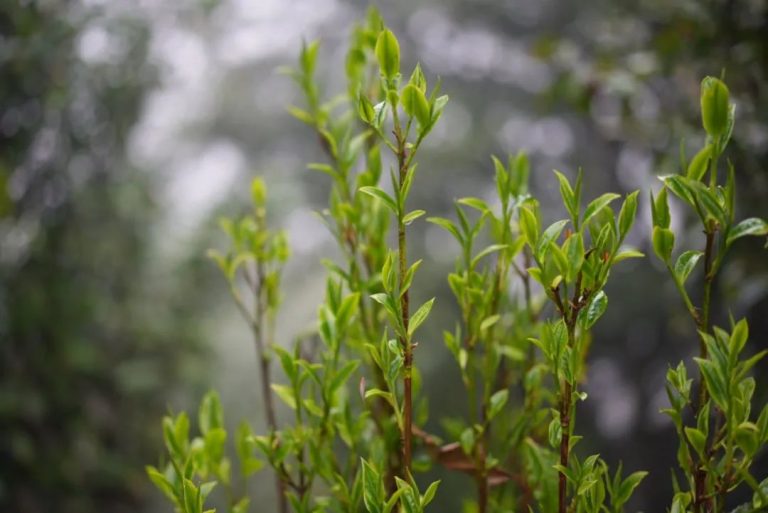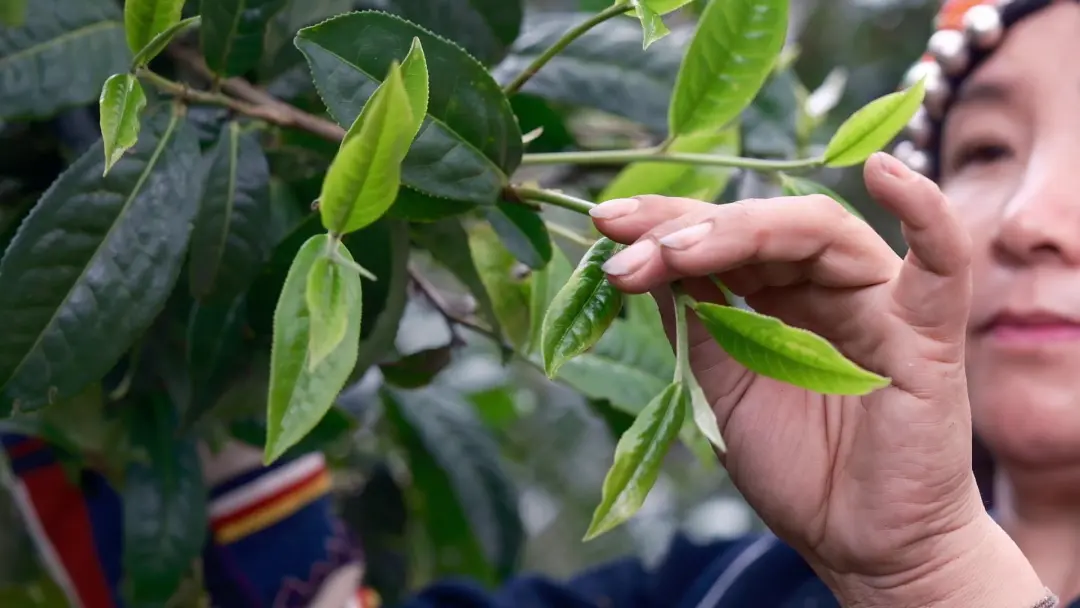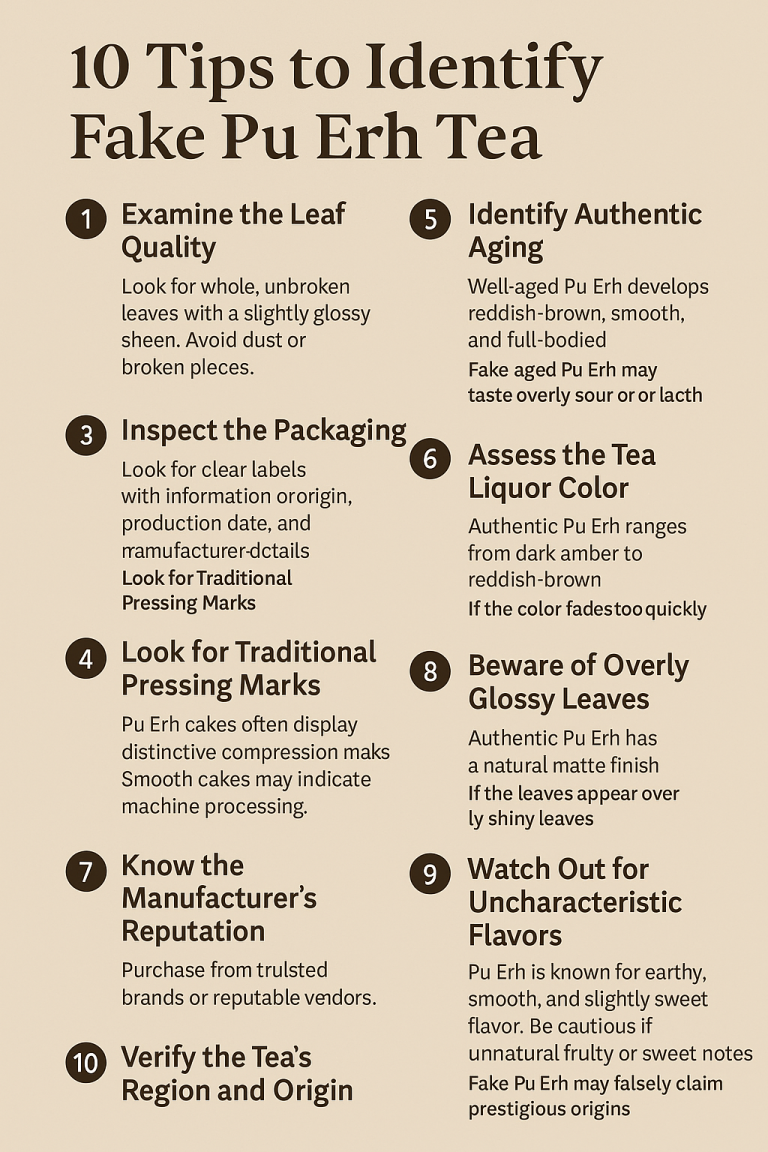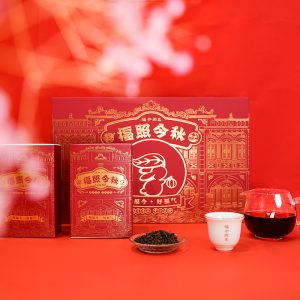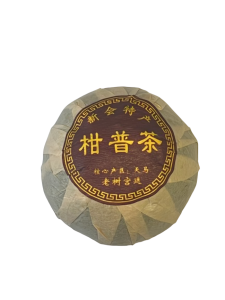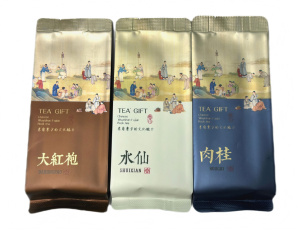
Wuyi Rock Tea and Dan Cong Tea belong to the oolong tea family and have carved distinct cultural identities through their unique terroir, craftsmanship, and flavor profiles. Wuyi Rock Tea, celebrated for its “rock rhyme and floral aroma,” thrives in Wuyi Mountain’s mineral-rich cliffs. In contrast, Dan Cong Tea, renowned for its “mountain rhythm and floral bouquet,” flourishes in Phoenix Mountain’s misty highlands. This article delves into their differences, offering tea enthusiasts a roadmap for appreciation and selection.
Origins and Terroir: The Geographical Code
- Rock Tea: Originating from Wuyi Mountain, Fujian, its signature “rock rhyme” stems from the Danxia landform, where tea trees grow in rocky crevices enriched with minerals. Core growing areas like Three Pits and Two Streams (Huiyuan Pit, Niulan Pit, etc.) shape its terroir-driven quality.
- Dan Cong Tea: Hailing from Phoenix Mountain, Chaozhou, Guangdong, it thrives in high-altitude (over 1,000m) granite soil under a subtropical monsoon climate. Ancient trees in Wu Dong and Da’an villages, some dating back to the Song Dynasty, yield the prized “single bush” (Dan Cong) teas, embodying a delicate “mountain rhythm”.
Craftsmanship: The Artisan’s Touch
| Process | Rock Tea | Dan Cong Tea |
|---|---|---|
| Fermentation | Moderate (30%-50%), emphasizing depth | Light (20%-30%), highlighting freshness |
| Roasting | Multiple charcoal firings (2+ rounds), creating caramelized notes | 1-2 lighter firings to preserve floral aromas |
| Harvest Standard | Mature leaves (mid-to-large open buds) | Younger leaves (small-to-mid open buds) |
Rock Tea’s “three-stage roasting” builds complexity, while Dan Cong’s precision roasting safeguards its delicate fragrance.
Aroma and Taste: A Sensory Duel
- Aroma Profiles:
- Rock Tea: Layers of orchid, cinnamon (e.g., Rougui), and toasted caramel, anchored by a mineral “rock rhyme”.
- Dan Cong Tea: Vibrant floral-fruity notes across 10+ aroma types (e.g., Honey Orchid, Ya Shi Xiang), with a crisp “mountain rhythm”.
- Palate Experience:
- Rock Tea: Full-bodied with a bittersweet transition and lingering woody aftertaste (e.g., aged Shuixian’s camphor notes).
- Dan Cong Tea: Silky texture, low astringency, and a honeyed finish, ideal for refreshing daily sipping.
Visual Clues: Liquor and Leaf
| Aspect | Rock Tea | Dan Cong Tea |
|---|---|---|
| Liquor Color | Amber to orange-red, crystal-clear | Golden to light orange, radiant |
| Spent Leaves | “Green leaves with red edges,” toad’s back texture | Soft, evenly red-edged leaves |
Deep roasting darkens Rock Tea’s liquor, while Dan Cong’s light processing retains youthful hues.
Health Benefits: A Scientific Lens
- Rock Tea: High in polyphenols and caffeine, it boosts metabolism and mental alertness, suited for those seeking energy.
- Dan Cong Tea: Rich in amino acids and vitamin C, it cools the body and aids digestion, perfect for mild daily consumption.
Buying and Tasting Guide
- Origin Matters: Prioritize Rock Tea labeled Zheng Yan (core cliffs) and Dan Cong from Wu Dong or high-elevation zones.
- Aging vs. Freshness: Rock Tea mellows after a year (reducing the “fire taste”), while Dan Cong peaks in aroma when fresh.
- Tasting Focus: Savor Rock Tea’s mineral depth and Dan Cong’s floral elegance.
Discover Your Tea Soulmate

Whether drawn to Rock Tea’s earthy resonance or Dan Cong’s floral symphony, both encapsulate nature’s artistry. Explore our curated Oolong Tea to embark on your Oolong journey.
FAQ
Rock Tea emphasizes terroir and heavy roasting; Dan Cong highlights single-bush aromas and light fermentation.
Observe liquor color (dark vs. light), sniff for depth vs brightness, and taste for boldness vs delicacy.
Rock Tea suits bold flavor lovers; Dan Cong appeals to floral tea enthusiasts.

